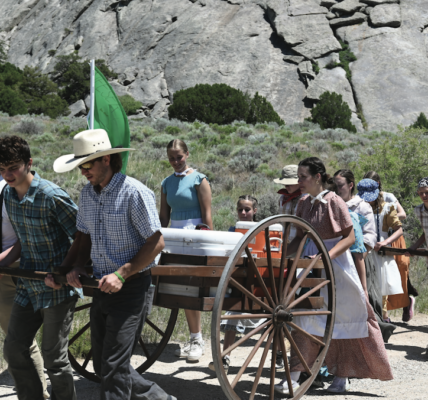The Lander Cut-Off of the Oregon Trail was originally established in the mid 19th century to easily connect California to the Union.
This was the first road the U.S. Congress funded out west for location and construction and the trail passes right through the south end of Star Valley at Forrest Dell. The trail is named after the supervisor of the project, F.W. Lander.
Its significance is it was an emigrant trail and a shortcut for the Oregon Trail. Ron Anderson with the Star Valley Historical Society says it was established as a military road just before the Civil War to easily connect to California.
“It was thought that by having a better route where there was more grass and water,” Anderson said. “It would be better for emigrant travel.”
This means thousands of people used this route making their way west and passed through Star Valley. Anderson says there are lots of unknown names but marked graves along the trail.
“It’s really neat to think that you can come out into the forest and walk on undisturbed, original graves,” Anderson said. “The F.W. Lander and his crew built as the first federally funded public road West of the Mississippi.”
Anderson says there were lots of people who suffered as they tried to move their way westward specifically at that section of the road on the Lander Cut Off of the Oregon Trail.
Anderson says he believes the road is the pulse of the nation.
“It was established to settle the west,” Anderson said. “Manifest Destiny of the country in the 1800’s, they thought they’d never be able to settle the west.
“But my goodness when they established the roads west and movement of people to find a better way of life, it just tells a lot about the pulse of the nation.”
He says many people wrote diaries which they have available to read. He says the people passing through knew there was something special about Star Valley.
“They had a sense of the beauty of the country even though it was harsh,” Anderson said. “When they entered Star Valley it was a wonderful time. They rested their stock and were able to relax.”
He says in those diaries people always expressed the beauty of the valley in the 1850’s and 1860’s. He says it is the same impression many people have today.






